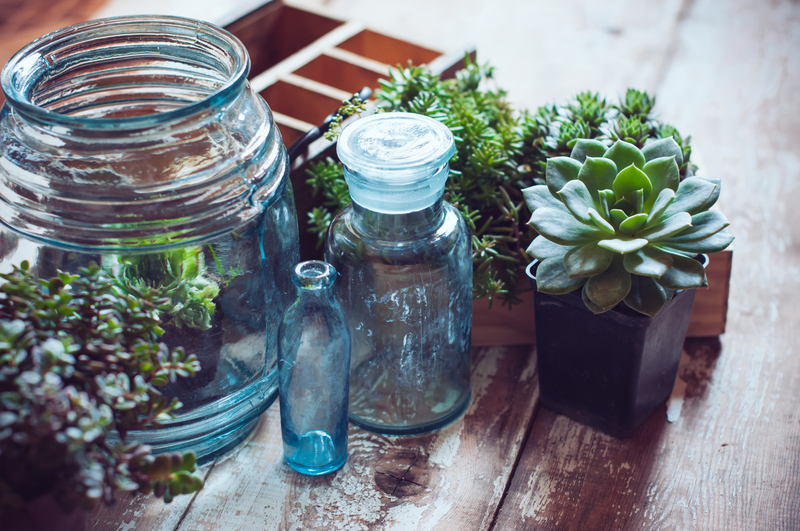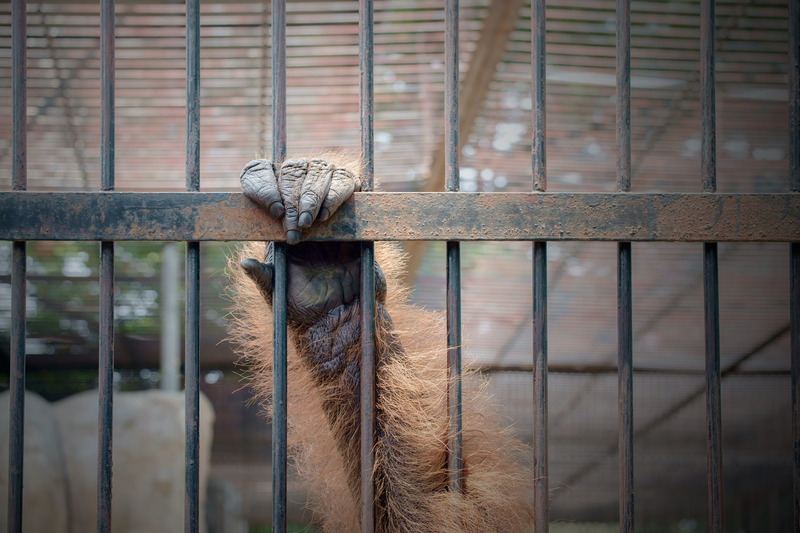Creative Approaches to Packaging and Cardboard Disposal
In today's environmentally-conscious era, businesses and consumers alike are seeking innovative ways to address the growing challenge of packaging waste, particularly cardboard disposal. As the popularity of online shopping skyrockets, so does the accumulation of discarded boxes and packaging materials. Embracing creative, sustainable solutions for packaging and cardboard disposal offers a pathway to not only reduce environmental impact but also drive brand loyalty and operational efficiency. In this article, we'll explore bold and imaginative strategies for responsible packaging and efficient cardboard waste management that benefit both people and the planet.

Why Innovative Packaging and Cardboard Waste Solutions Matter
Cardboard packaging has become a near-universal feature of modern commerce, widely used for shipping, storage, and product display. While cardboard is lauded for its recyclability, improper disposal and overuse contribute to environmental challenges such as:
- Landfill overflow from non-recycled cardboard
- Resource depletion from overproduction
- Excessive energy use in manufacturing and recycling processes
- Negative effects on local ecosystems and urban cleanliness
Creative approaches to packaging and cardboard disposal can minimize waste, lower costs, and even enhance customer experience. Next, let's examine some pioneering methods and strategies for sustainable packaging and environmentally-friendly cardboard waste management.
Innovative Packaging Design for Sustainability
At the heart of sustainable packaging is thoughtful design. By reconsidering how products are wrapped, shipped, and delivered, businesses can minimize material use and simplify the recycling process.
1. Right-Sizing Packaging
- Custom Sizing: Modern packing algorithms and machinery allow retailers to create boxes that match the precise dimensions of their products. This reduces excess cardboard and eliminates the need for fillers.
- Multi-Use Packaging: Some brands design wrap-around boxes that can morph in size or shape depending on the order, further minimizing wasted space and material.
2. Utilizing Recycled and Alternative Materials
- Recycled Cardboard: Sourcing from post-consumer recycled paper reduces virgin tree pulp usage and lowers environmental footprint.
- Compostable Substitutes: Materials like mushroom-based packaging, cornstarch peanuts, or bagasse (sugarcane fiber) are biodegradable alternatives that businesses can include in their packaging lineup.
3. Minimalist and Modular Packaging Concepts
- Flat Pack Designs: Inspired by the furniture industry (think IKEA), flat-pack packaging reduces bulk and streamlines both storage and return logistics.
- Modular Components: Designing inserts and compartments so boxes can be reused as organizers, storage units, or decorative elements after initial use.
By reimagining packaging at the design stage, businesses can drastically cut down on cardboard disposal needs.
Smart Collection and Sorting Innovations
Even with the best intentions, cardboard still inevitably accumulates. The good news is that today's creative methods make cardboard disposal more accessible, efficient, and sustainable than ever before.
1. Incentivized Recycling Programs
- Deposit Return Schemes: Retailers can encourage box returns by offering discounts, loyalty points, or other incentives, transforming waste into a valued resource.
- Community Collection Days: Hosting local events where residents can dispose of packaging and cardboard in bulk, paired with educational resources on proper recycling.
2. Technology-Assisted Waste Sorting
- Smart Bins: These bins use sensors and cameras to sort cardboard from mixed waste, ensuring a cleaner recycling stream and reducing contamination.
- Barcoded Packaging: Scannable QR codes direct consumers to instructions on proper disposal, or register a package for return and reuse.
3. Partnering with Local Recyclers
- Direct Drop-Off Deals: Collaborating with neighborhood recycling centers for scheduled pickups or drop-off locations at popular community spots.
- Business Alliances: Coordinating with neighboring companies to bulk-process cardboard, increasing bargaining power and efficiency with recyclers.
These innovative cardboard disposal methods streamline the recycling process and help ensure materials enter a circular economy.
Upcycling and Repurposing Cardboard: Beyond Recycling
Not all cardboard needs to be recycled immediately--many creative solutions give boxes and packaging new life, reducing the volume destined for recycling plants or landfills.
1. Upcycled Packaging for Creative Reuse
- DIY Craft Projects: Cardboard can become children's toys, cat houses, or art supplies, sparking creativity and reducing household waste.
- Storage Solutions: Reinforced cardboard is a popular and cost-effective material for drawer dividers, desktop organizers, and shelving units.
- Home Gardening: Use old boxes for seed trays, composting, or as natural weed barriers under mulch.
2. Business-Focused Upcycling
- Reusable Shipping Envelopes: Some ecommerce brands encourage customers to send back sturdy packaging for reuse--saving money and resources.
- Event Decor and Displays: Trade shows, pop-up shops, and retail displays often use upcycled cardboard for lightweight, creative signage.
3. Community Projects
- Collaborative Art Installations: Schools and organizations can host cardboard sculpture events, turning waste into public art and social engagement opportunities.
- Donation Drives: Gently used boxes make valuable stock for community moves, schools, or non-profits needing storage and shipping materials.
By viewing cardboard as a resource rather than refuse, communities and businesses unlock new value while promoting environmental stewardship.
Technological Innovations in Cardboard Recycling and Disposal
Advances in recycling and waste management technology are transforming the way packaging and cardboard are handled at scale. Some of the most exciting developments include:
1. Automated Cardboard Compressors and Balers
- Compact, On-Site Solutions: Small businesses can now install compactors that shred and compress cardboard into manageable bales, ready for efficient pick-up and transport.
- Reduced Carbon Impact: By minimizing the number of pickups required, automated balers lower transportation emissions associated with cardboard disposal.
2. Advanced Sorting Technologies
- AI-Driven Facilities: Modern recycling centers employ AI and robotics for sorting mixed recyclables, ensuring cleaner streams and higher yields from cardboard waste.
- Optical Scanners: Using advanced cameras, centers can rapidly distinguish between pure cardboard, coated paperboard, and contaminants.
3. Innovative Recycling Methods
- Enzymatic Pulping: New bio-based technologies are making it easier to break down cardboard with less energy, reducing the carbon cost of recycling.
- Plastic-Cardboard Hybrids: Facilities are developing better methods for separating plastic coatings from cardboard, enabling more packaging to be recycled.
Deploying such technological innovations means businesses and municipalities can manage packaging and cardboard disposal *smarter*--raising recycling rates and lowering environmental impact.
Creative Packaging Trends Shaping the Future
The intersection of sustainability and brand identity is fueling a wave of creative, eco-conscious packaging trends, including:
- Edible Packaging: Pioneered in the food and beverage industry, packages made from seaweed or rice paper that can be safely consumed.
- Returnable Transit Packaging (RTP): Durable packaging designed for multiple uses in closed-loop supply chains--popular in B2B, but expanding to consumers.
- Personalized and Interactive Packaging: Custom-printed cardboard for unique unboxing experiences, often featuring QR codes linking to digital content about recycling and reuse.
- Plantable Packaging: Boxes embedded with seeds that can be planted after use, leaving a lasting green impact beyond their primary function.
These creative approaches to packaging are not only minimizing environmental harm but also delighting consumers and setting brands apart in the crowded digital marketplace.
Practical Tips for Sustainable Cardboard Disposal at Home and Business
Whether you are a business owner, an eco-minded homeowner, or an urban dweller drowning in shipping boxes, adopting creative approaches to packaging and responsible cardboard disposal can make a real difference. Here are some simple steps:
For Households:
- Break Down Boxes to save space and facilitate recycling.
- Avoid Contaminating Cardboard with food, oils, or liquids that can spoil an entire batch of recyclables.
- Find Local Recycling Days or drop-off points for oversized or bulk packaging.
- Get Creative! Repurpose sturdy boxes for kids' crafts, storage, or as moving supplies.
For Businesses:
- Audit Packaging Processes regularly to identify unnecessary cardboard use.
- Partner with Sustainable Suppliers for recycled-content or innovative packaging materials.
- Invest in Compactors or Balers if you have substantial cardboard output.
- Engage Customers in return or recycling programs and clearly communicate proper disposal steps on labels.
Every effort counts when it comes to responsible packaging and effective cardboard waste management.

The Environmental and Economic Benefits of Creative Packaging and Cardboard Waste Solutions
Implementing creative approaches to packaging and cardboard disposal yields both environmental and financial advantages for organizations and individuals, including:
- Reduced Landfill Waste: Less cardboard going to landfill means less methane gas production and saved landfill space.
- Lower Raw Material Consumption: Recycling and reusing packaging preserves forests and cuts down on water and energy use.
- Cost Savings: Efficient packaging and bulk recycling programs save money on both materials and waste hauling.
- Enhanced Brand Reputation: Eco-friendly packaging and disposal initiatives signal commitment to sustainability, building customer trust and loyalty.
- Regulatory Compliance: Meeting or exceeding municipal recycling requirements avoids penalties and supports community waste reduction goals.
Conclusion: Thinking Outside the (Cardboard) Box
Sustainable, creative approaches to packaging and cardboard disposal are more accessible, varied, and essential than ever before. By embracing innovative packaging design, upcycling, new recycling technologies, and community engagement, both businesses and consumers can make tangible progress toward a cleaner, greener world.
Now is the time to rethink the lifecycle of packaging--seeing cardboard and other materials not as disposable, but as valuable resources with unlimited potential. Whether you're a brand looking to stand out, a homeowner keen to cut waste, or a policymaker setting new standards, creative cardboard disposal and packaging strategies offer a win-win pathway to sustainability, innovation, and success.
Make your impact today: Reduce, reuse, recycle, and reimagine every box you encounter.
